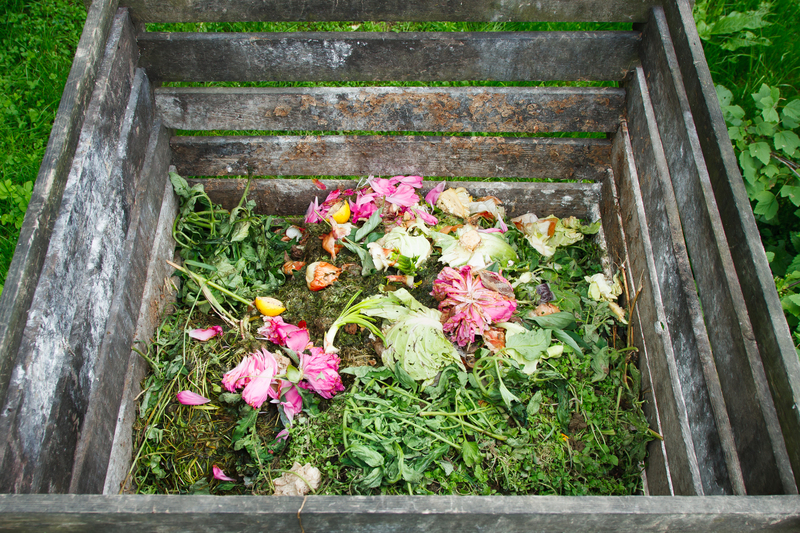Protecting Nature by Managing Your PPE Waste Responsibly
The ongoing global health landscape has thrust personal protective equipment (PPE) into our everyday lives. Masks, gloves, face shields, and other forms of PPE have become essential in safeguarding both the public and frontline workers. However, the surge in PPE use has introduced a critical environmental challenge: responsible management of PPE waste. Improper disposal of these materials endangers our ecosystems, wildlife, and community health. This comprehensive article details strategies, insights, and actionable steps for managing PPE waste to protect nature and ensure a sustainable future.
Table of Contents
- Why PPE Waste is a Threat to Nature
- Types of PPE and Their Environmental Impacts
- Proper PPE Waste Disposal Practices
- Recycling and Innovative Solutions for PPE Waste
- Community Initiatives and Individual Responsibility
- Corporate and Government Roles in Managing PPE Waste
- How Responsible PPE Waste Management Protects Nature
- Actionable Tips for Managing Your PPE Waste Responsibly
- Conclusion: Shaping a Greener Future Through PPE Waste Management
Why PPE Waste is a Threat to Nature
Since the outbreak of recent global health crises, the world has witnessed an unprecedented rise in the use of disposable masks, gloves, and other PPE items. While these products play a vital role in preventing transmission of infectious diseases, their proliferation has resulted in a new kind of pollution. PPE waste, when not managed responsibly, poses multiple threats:
- Wildlife ingestion and entanglement: Animals can mistake discarded masks and gloves for food, leading to digestive blockages or suffocation.
- Microplastic pollution: Single-use PPE often contains plastics that break down into microplastics, contaminating soil and water.
- Urban litter and visual pollution: Improperly discarded PPE affects the aesthetic value of public spaces and hampers urban cleanliness.
- Human health risks: Waste collectors and the general public are exposed to health hazards through contaminated PPE if not handled responsibly.
The environmental impact of PPE waste is substantial and requires coordinated action at the individual, community, and governmental levels to mitigate its consequences.
Types of PPE and Their Environmental Impacts
Personal protective equipment comes in various forms, each with distinct composition and environmental ramifications:
- Disposable Face Masks: Most are made from non-biodegradable plastics such as polypropylene, which persist in the environment for decades.
- Gloves: Available in latex, nitrile, and vinyl. Nitrile and vinyl gloves are not biodegradable and accumulate in landfills.
- Face Shields and Goggles: Often composed of polycarbonate or PET plastic, adding to global plastic pollution.
- Protective Gowns and Suits: Usually constructed from high-density polyethylene or other synthetic polymers, with very slow decomposition rates.
Understanding the materials in these items is key to responsible PPE waste management. Most conventional PPE is designed for single-use and does not break down naturally, emphasizing the critical importance of proper PPE disposal and recycling programs.
Proper PPE Waste Disposal Practices
Managing your PPE waste responsibly begins with adhering to proper disposal guidelines. Here are best practices recommended by health and environmental agencies worldwide:
1. Do Not Litter PPE
- Never throw used masks or gloves on the street, in parks, or in bodies of water. These actions directly harm wildlife and clutter natural environments.
2. Use Dedicated Waste Bins
- Place used PPE items in designated bins marked for hazardous or infectious waste, if available.
- If a dedicated PPE bin is not accessible, double-bag your waste in a secure garbage bag.
3. Seal and Separate PPE Waste
- Seal PPE waste bags before disposal to prevent accidental exposure to sanitation workers or wildlife.
- Never dispose of PPE with recyclable materials as contaminants can endanger recycling facility workers and degrade recyclable materials.
4. Follow Local Waste Management Regulations
- Check for regional guidelines on PPE disposal, especially during pandemics or outbreaks.
Proper PPE waste management is crucial in minimizing environmental contamination and reducing public health risks.
Recycling and Innovative Solutions for PPE Waste
While most PPE is not traditionally recyclable via curbside programs, ongoing research and industry innovation are paving the way for sustainable solutions. Here are emerging methods and ideas to transform PPE waste into resources:
- PPE Recycling Programs: Specialized companies and organizations now collect and recycle single-use masks and gloves into construction materials or energy.
- Thermal Processing: Certain types of PPE can undergo pyrolysis or other methods to transform plastics into fuel or other usable materials.
- Upcycling Projects: Creative communities repurpose PPE waste in art and practical applications--such as insulation or road construction materials.
- Development of Reusable PPE: Manufacturers are increasingly designing eco-friendly, reusable masks and shields to lessen reliance on single-use plastics.
If you wish to recycle your PPE waste responsibly, seek out local programs or mail-back services tailored for this purpose. Remember, never place contaminated PPE in household recycling bins.
Community Initiatives and Individual Responsibility
A sustainable approach to managing PPE waste involves both collective and personal action. Here's how communities and individuals can make a meaningful difference:
Community Awareness Campaigns
- Host educational workshops to inform residents about the proper handling of PPE waste.
- Install visible PPE disposal stations in high-traffic areas, parks, and transportation hubs.
Individual Best Practices
- Reduce unnecessary PPE consumption by using reusable or washable options where appropriate.
- Encourage others to manage their PPE waste responsibly through social media or word of mouth.
- Participate in community cleanups to remove PPE litter from streets, parks, and waterways.
When everyone plays their part in environmentally conscious PPE waste management, together we safeguard nature and public health.
Corporate and Government Roles in Managing PPE Waste
The large-scale nature of PPE waste means that systemic solutions are vital. Both the public and private sectors must take action:
Corporate Responsibility
- Adopt green procurement policies that favor suppliers offering biodegradable or reusable PPE.
- Implement clear PPE waste collection and disposal protocols within the workplace.
- Support or fund research into innovative PPE recycling technologies.
Governmental Regulations and Support
- Enforce legislation on correct disposal of infectious and non-infectious PPE waste.
- Provide financial or logistical support for PPE recycling initiatives.
- Update waste management infrastructure to address the influx of new waste streams.
- Encourage eco-design and labeling for easy segregation and recycling of PPE products.
Synergy between government policies and industry action is essential for a nature-friendly, sustainable PPE waste management system.
How Responsible PPE Waste Management Protects Nature
Managing PPE waste responsibly delivers direct and indirect benefits to the environment:
- Reduces pollution in soil and waterways, safeguarding aquatic and terrestrial ecosystems.
- Prevents harm and death among birds, fish, and mammals who could ingest or become entangled in PPE debris.
- Minimizes microplastic formation, thereby protecting food chains and human health.
- Limits greenhouse gas emissions by reducing PPE incineration and encouraging recycling.
- Improves urban cleanliness and supports resilient, attractive communities.
The strategic and ethical handling of PPE waste is a tangible way each of us can protect the planet's natural beauty and biodiversity.
Actionable Tips for Managing Your PPE Waste Responsibly
- Opt for Reusable PPE: Whenever safe and appropriate, select washable masks and face coverings instead of disposables.
- Dispose of PPE in Designated Bins: Follow public signage and local regulations to ensure waste is properly sorted and treated.
- Stay Informed: Keep up with the latest guidance from health authorities, environmental agencies, and local waste management services.
- Support PPE Recycling Initiatives: Advocate for and contribute to local and national PPE recycling programs and innovations.
- Educate and Advocate: Share information with family, friends, and colleagues to multiply the impact of responsible PPE waste management.
- Avoid Flushing PPE: Never flush masks or gloves. These can block plumbing and harm aquatic environments.
By integrating these practices into your routine, you can make a real difference in protecting nature by managing your PPE waste responsibly.
Conclusion: Shaping a Greener Future Through PPE Waste Management
The global surge in PPE usage may have been a necessary response to health emergencies, but its side effects demand thoughtful intervention. Protecting nature by managing your PPE waste responsibly is not just an environmental obligation--it is a civic duty for the well-being of current and future generations. From individuals making mindful choices to government bodies enacting resilient policies, every effort counts.
As we look to the future, let's harness innovation, education, and community action to build systems that balance public health and environmental stewardship. Together, we can create a world where the commitment to protecting nature and managing PPE waste responsibly becomes the norm--and our planet thrives once again.

